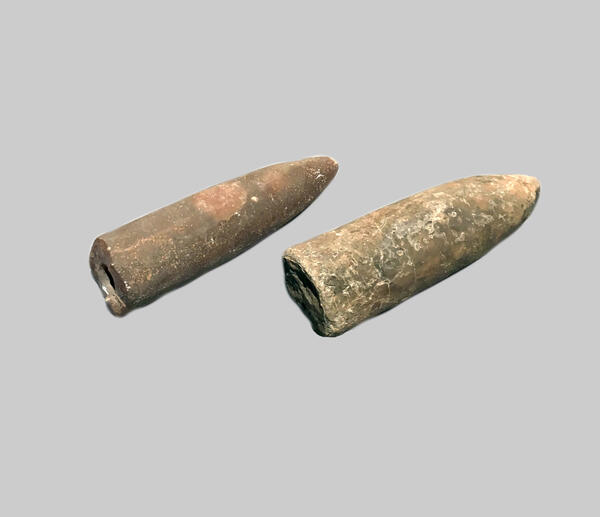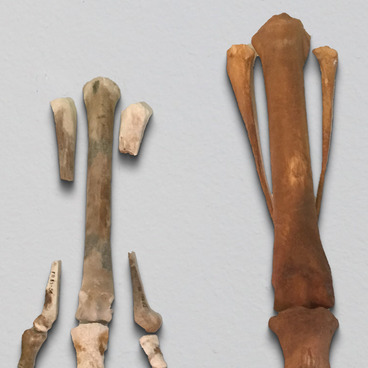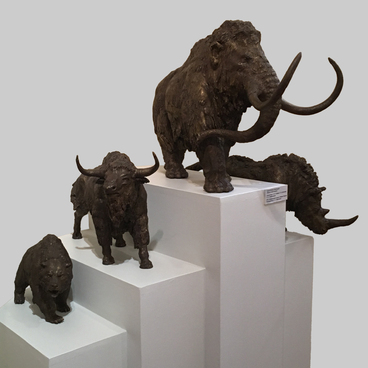Predatory cephalopod belemnites lived in the seas and oceans of the planet in the Mesozoic era. They got their name because of the similarity of their fossilized remains with weapons: translated from Greek, ‘belemnon’ means ‘dart’ or ‘arrow’. The popular nickname for belemnites is ‘devil’s finger’. Belemnites were in many ways similar to modern squid. They reproduced by laying eggs: one female laid from 100 to 1,000 eggs, from which babies less than 2 millimeters in size hatched. In adulthood, these cephalopods could reach 3 meters in length, but usually rarely exceeded 45 centimeters. Thanks to the imprints of belemnites’ soft bodies, it became known that they had a large head with a serrated beak, 10 tentacles with small chitinous hooks, and in some adult males there were even additional hooks up to 8 centimeters long.
When not agitated, belemnites moved by moving their fins: they could reach speeds of up to 1.8 kilometers/hour. If it was necessary to accelerate, they used a siphon, an outgrowth on the body in the form of a tube through which the belemnite released a jet stream of water. In cases when speed and agility did not help in hunting fish and mollusks, or defending against sharks, ichthyosaurs, plesiosaurs, and crocodiles, an ink sac helped protect the belemnites. One injection of ink into the water, and everything around was covered with an impenetrable veil.
Unlike squid, belemnites had a stronger, three-piece inner shell. The first part was a wide plate, and gave the body strength, the second one consisted of many hollow chambers, where the mollusk discharged fluid to change its buoyancy, and the third, the rostrum, served as a counterweight to the head and tentacles, and was required for better maneuverability. The rostrum was the most massive part of the belemnite shell, and among the fossilized remains of these cephalopods it is what is the most commonly encountered.
The structure of the rostrum has allowed scientists to identify several hundred species of belemnites. About 200 of them belong to the family Cylindroteuthidae. These were the inhabitants of the northern seas: they met in huge schools, even in Arctic waters. With climate change, Cylindroteuthis spread far to the south: paleontologists have found their rostra in the territory of both modern-day California and Mexico.
When not agitated, belemnites moved by moving their fins: they could reach speeds of up to 1.8 kilometers/hour. If it was necessary to accelerate, they used a siphon, an outgrowth on the body in the form of a tube through which the belemnite released a jet stream of water. In cases when speed and agility did not help in hunting fish and mollusks, or defending against sharks, ichthyosaurs, plesiosaurs, and crocodiles, an ink sac helped protect the belemnites. One injection of ink into the water, and everything around was covered with an impenetrable veil.
Unlike squid, belemnites had a stronger, three-piece inner shell. The first part was a wide plate, and gave the body strength, the second one consisted of many hollow chambers, where the mollusk discharged fluid to change its buoyancy, and the third, the rostrum, served as a counterweight to the head and tentacles, and was required for better maneuverability. The rostrum was the most massive part of the belemnite shell, and among the fossilized remains of these cephalopods it is what is the most commonly encountered.
The structure of the rostrum has allowed scientists to identify several hundred species of belemnites. About 200 of them belong to the family Cylindroteuthidae. These were the inhabitants of the northern seas: they met in huge schools, even in Arctic waters. With climate change, Cylindroteuthis spread far to the south: paleontologists have found their rostra in the territory of both modern-day California and Mexico.



